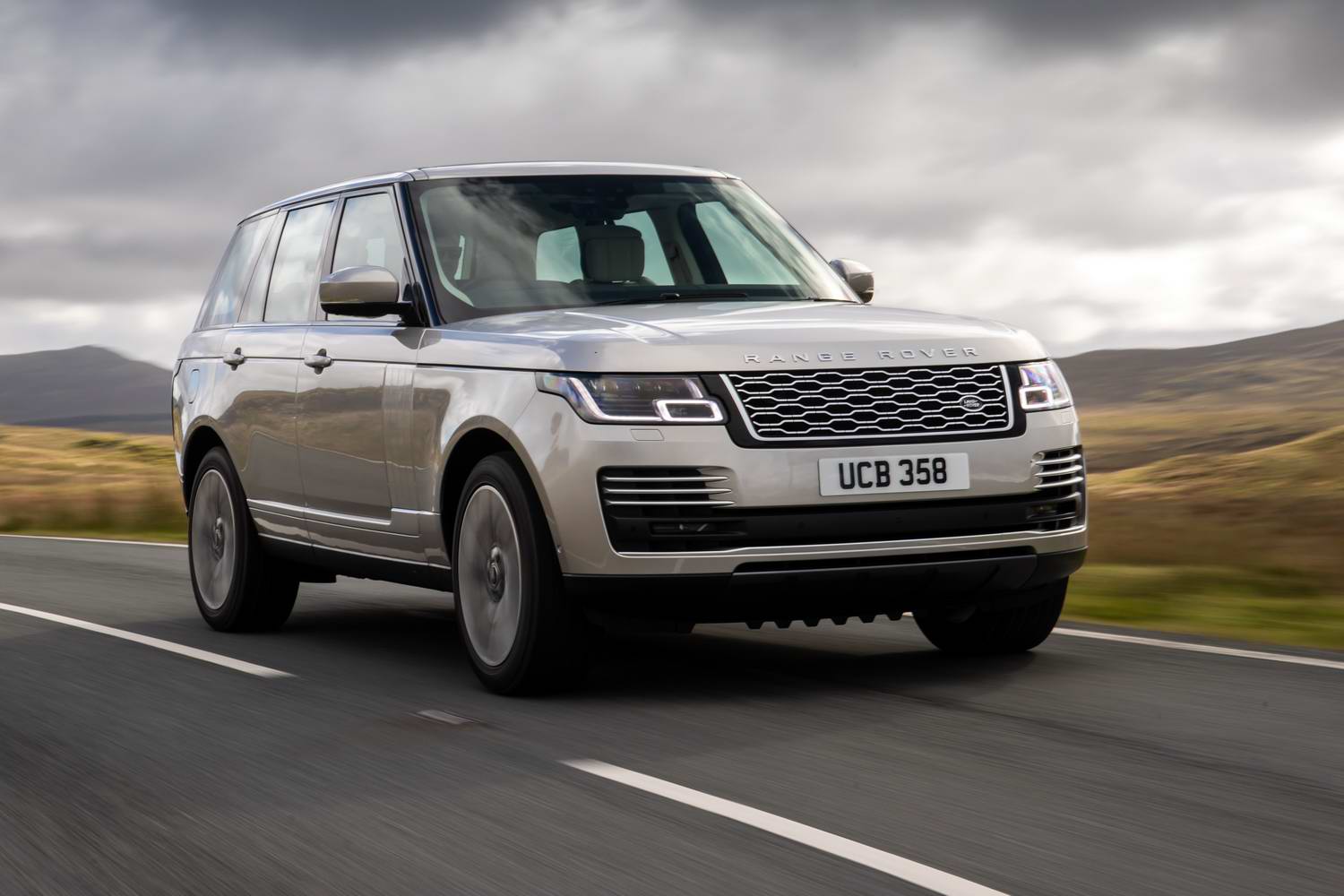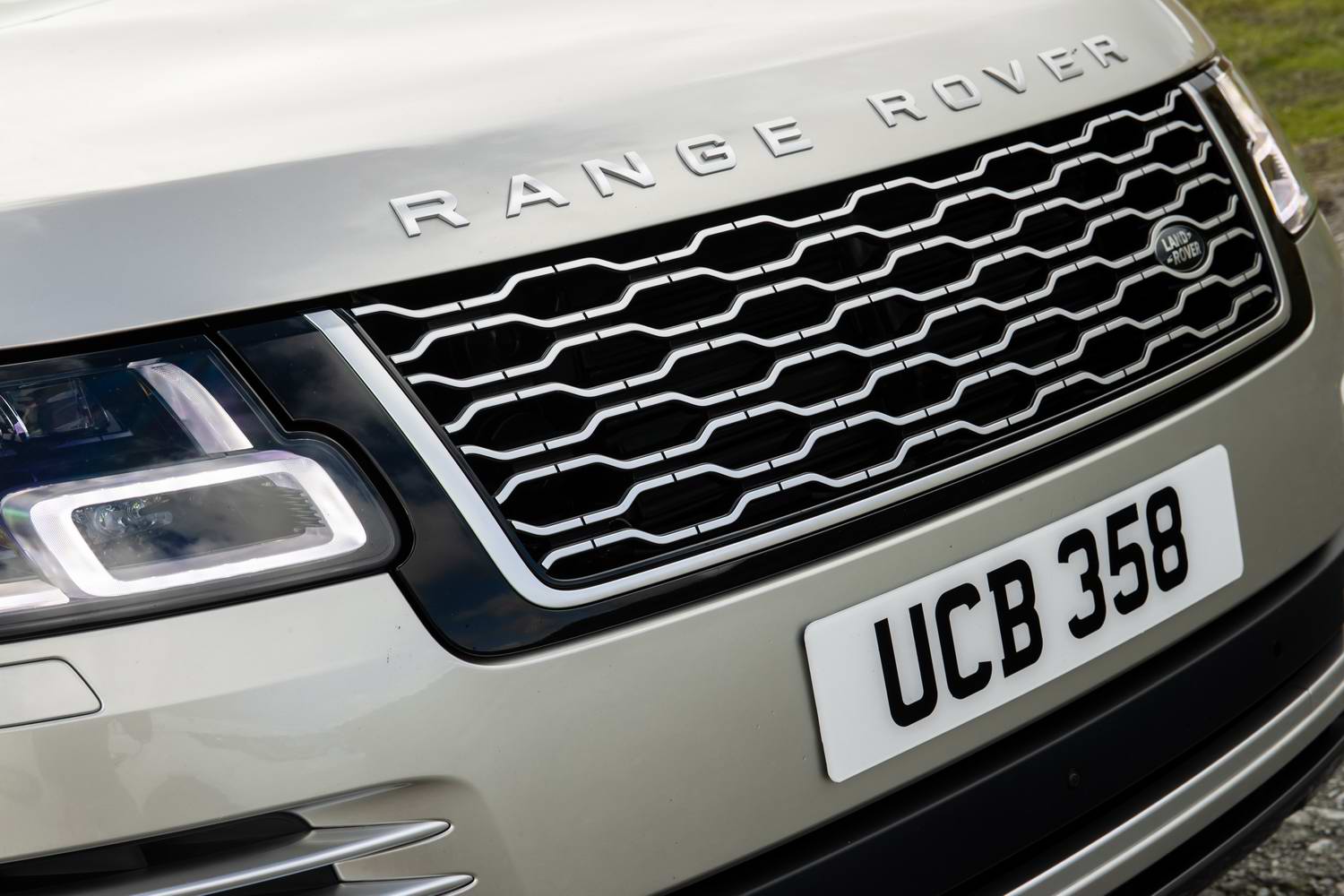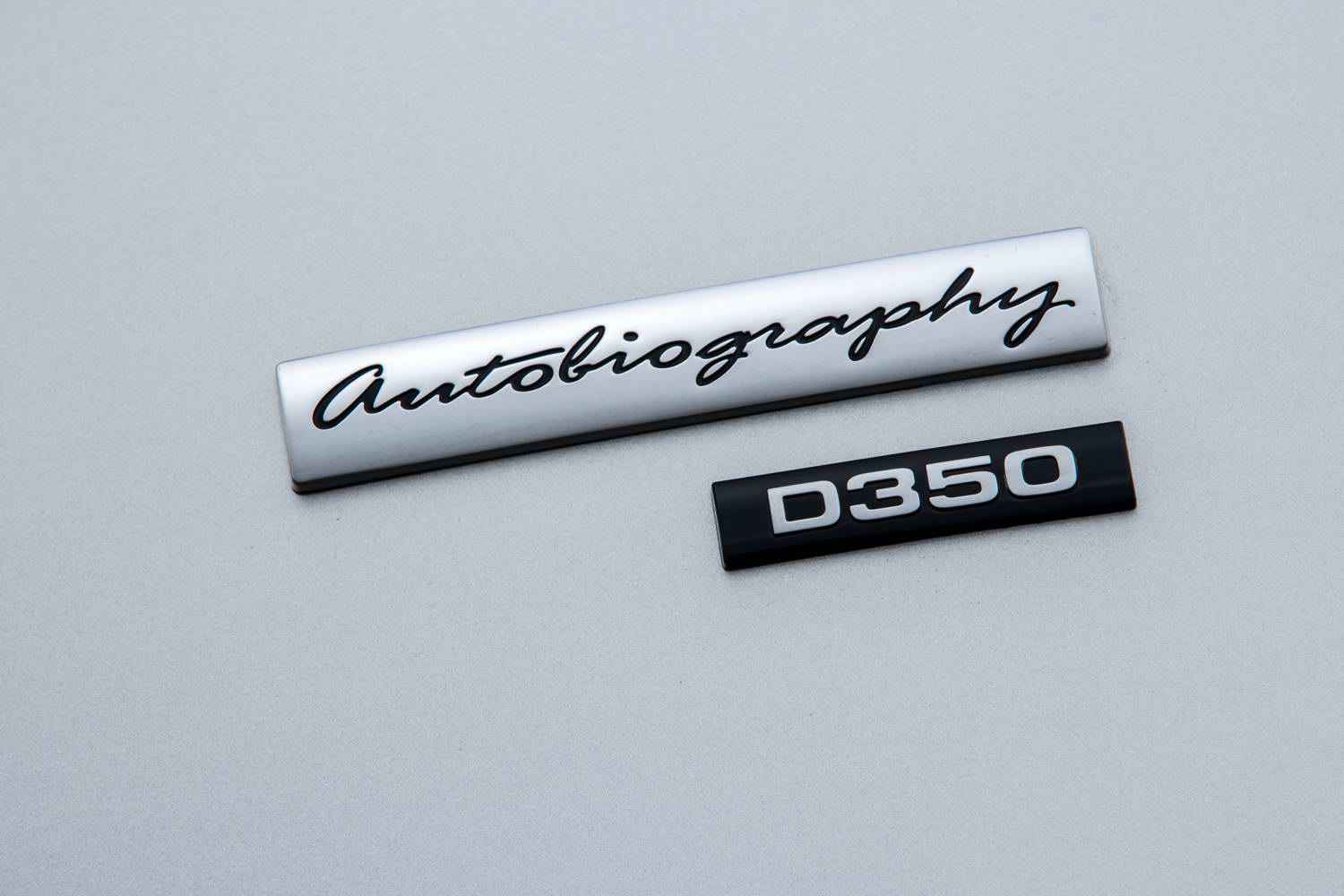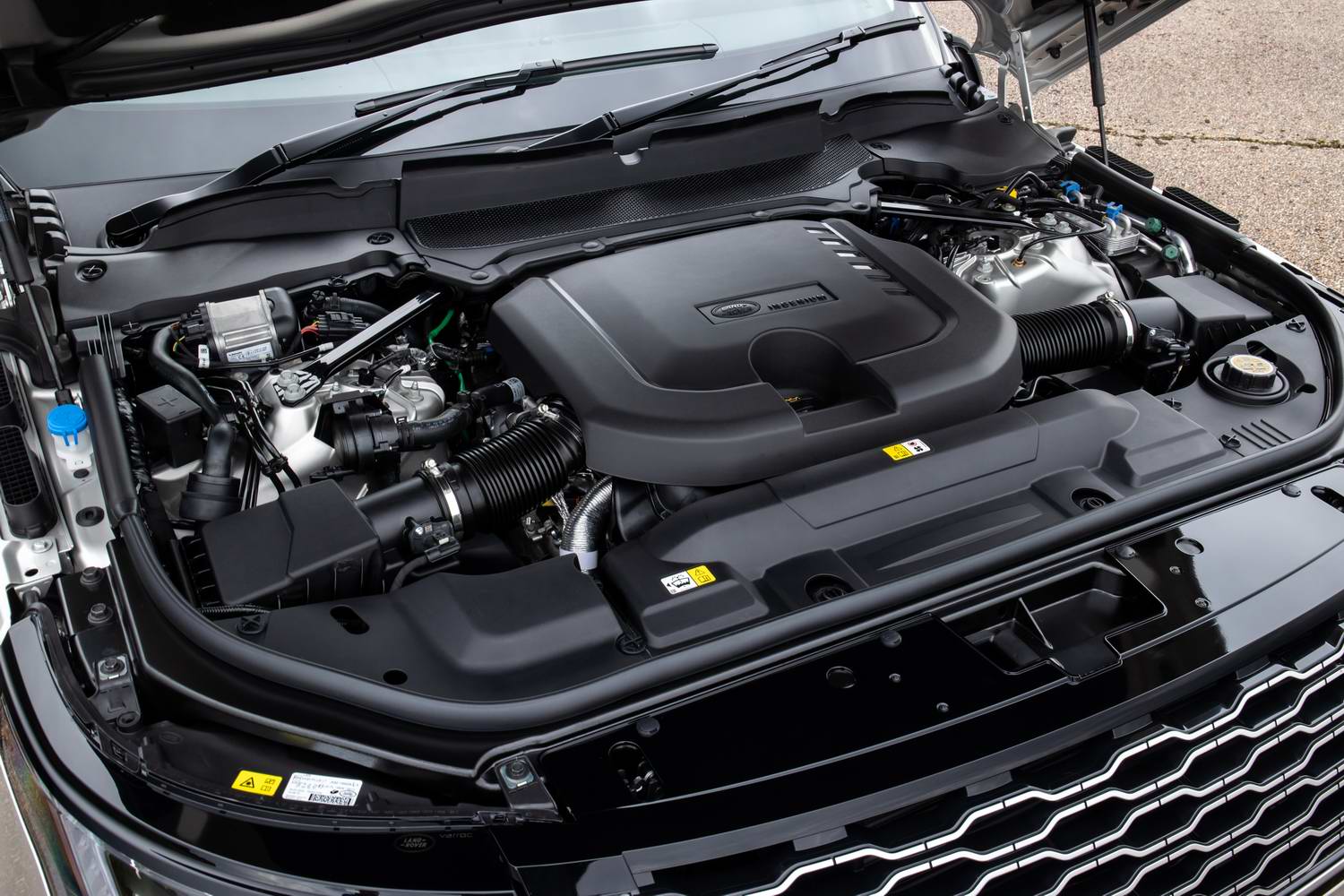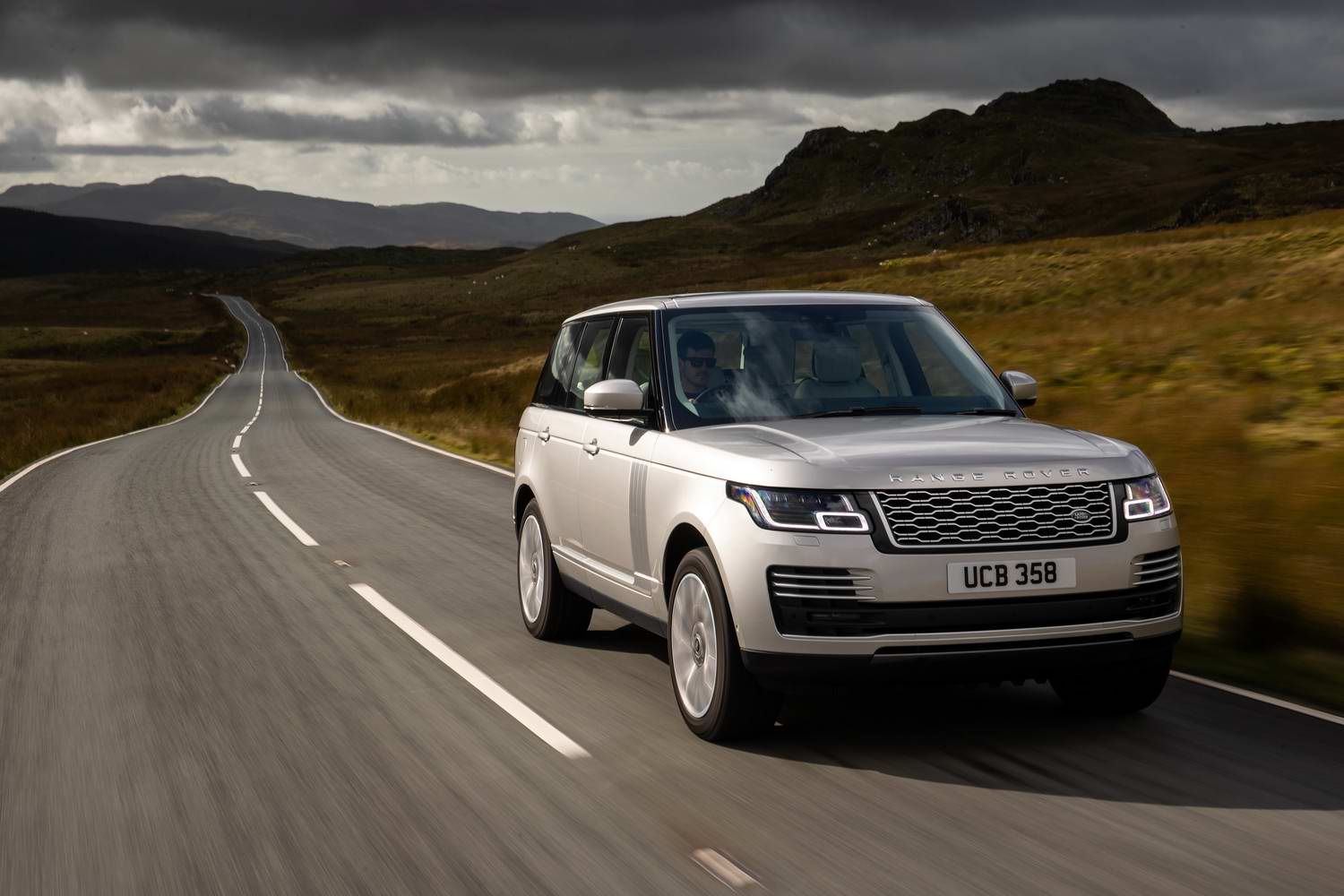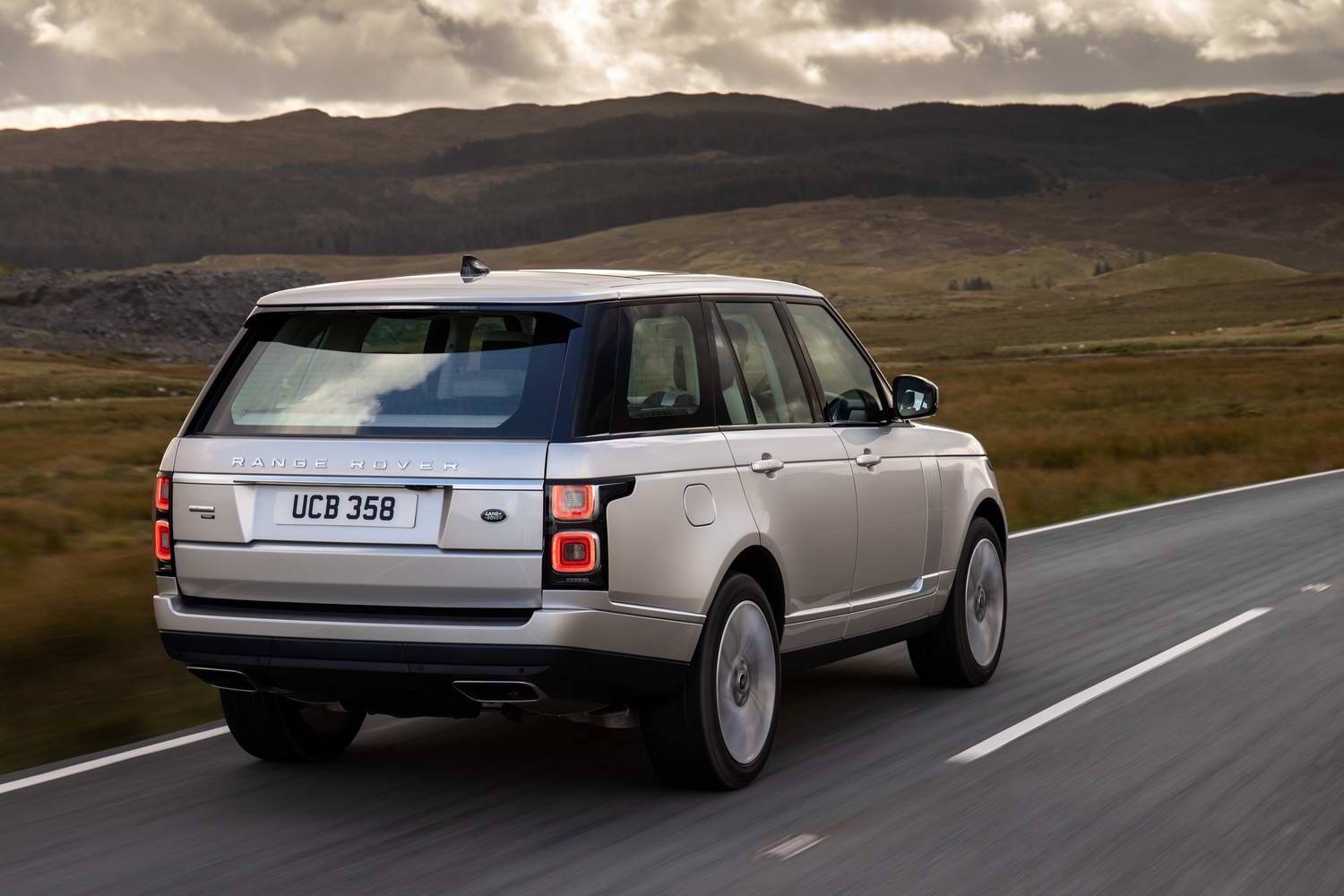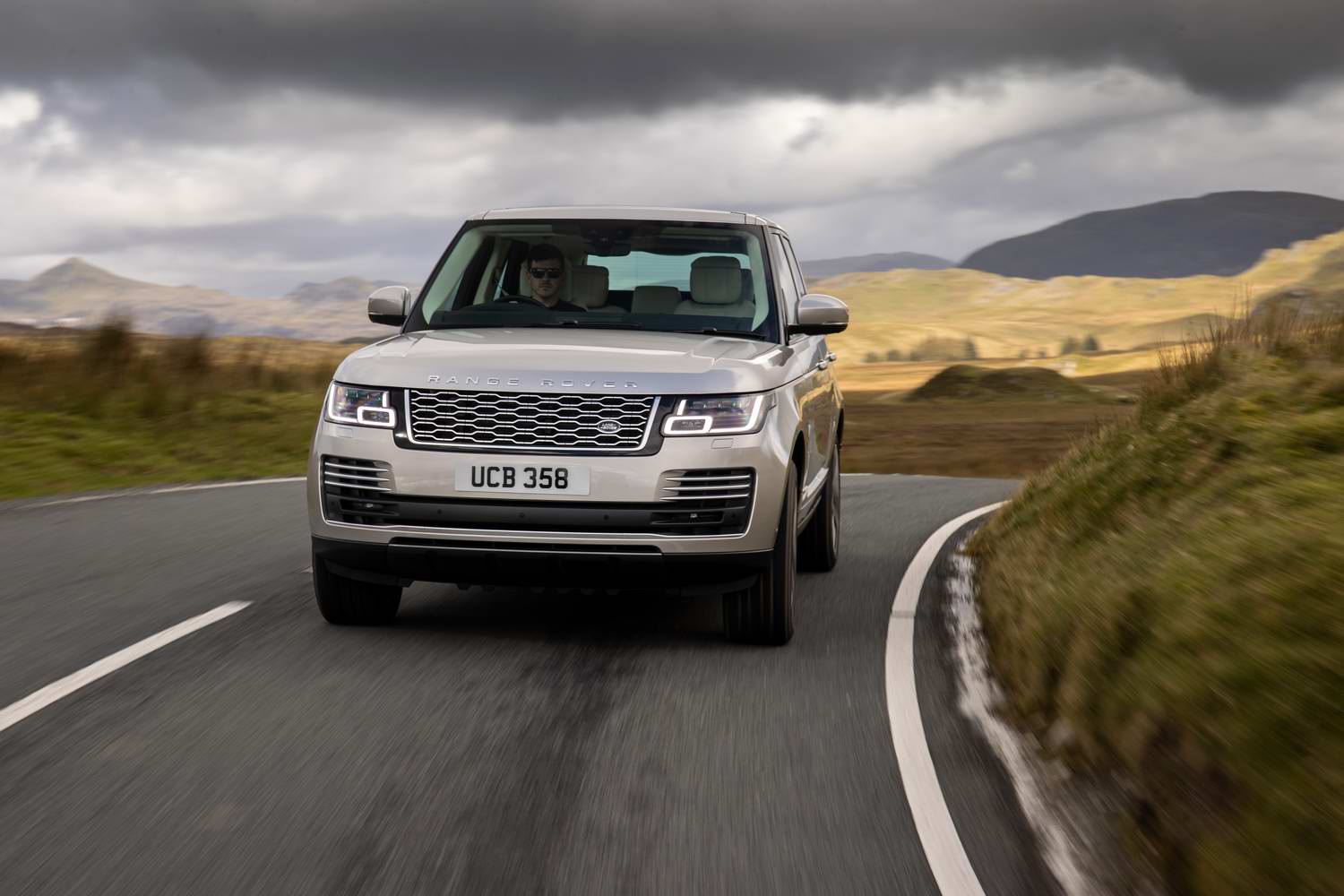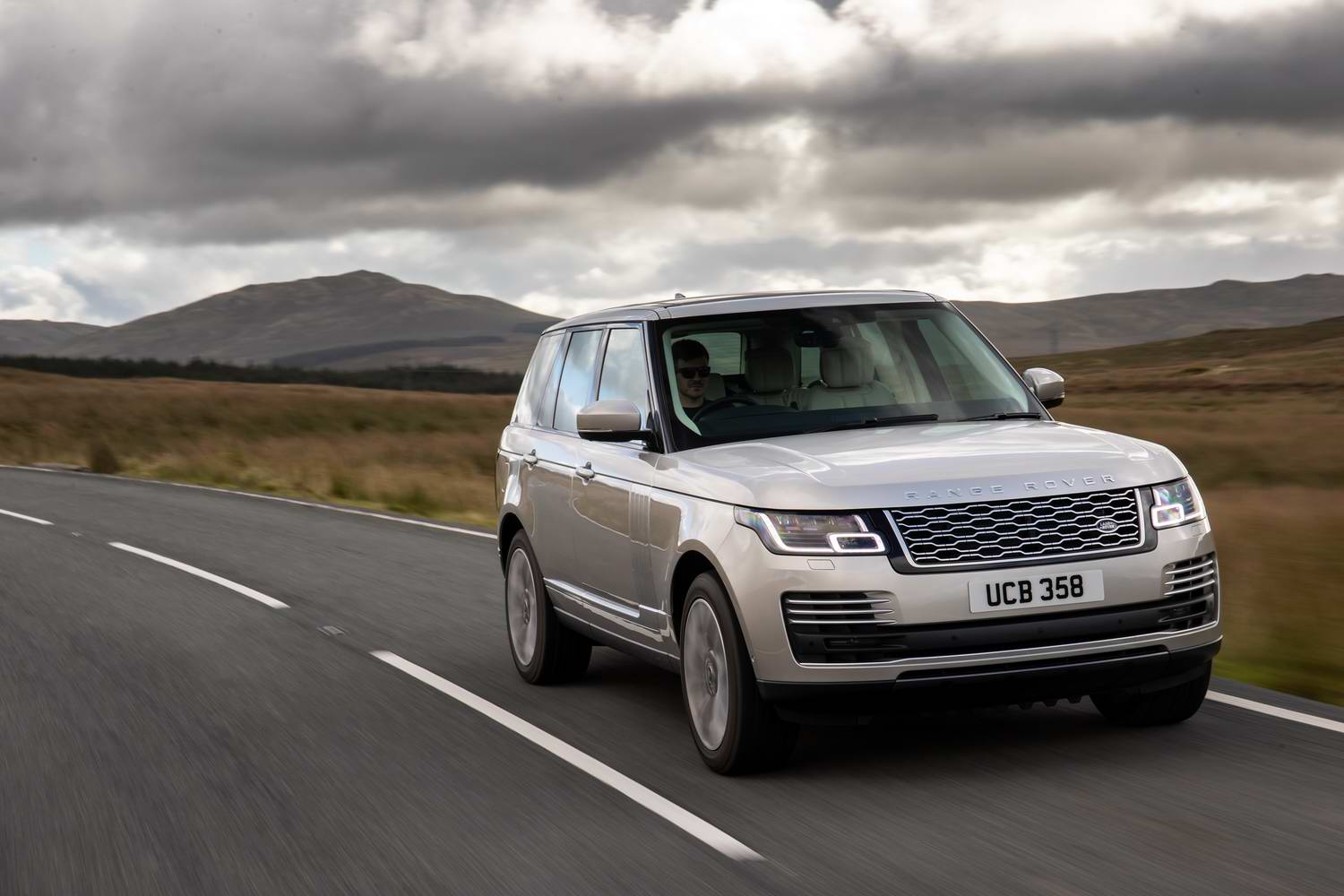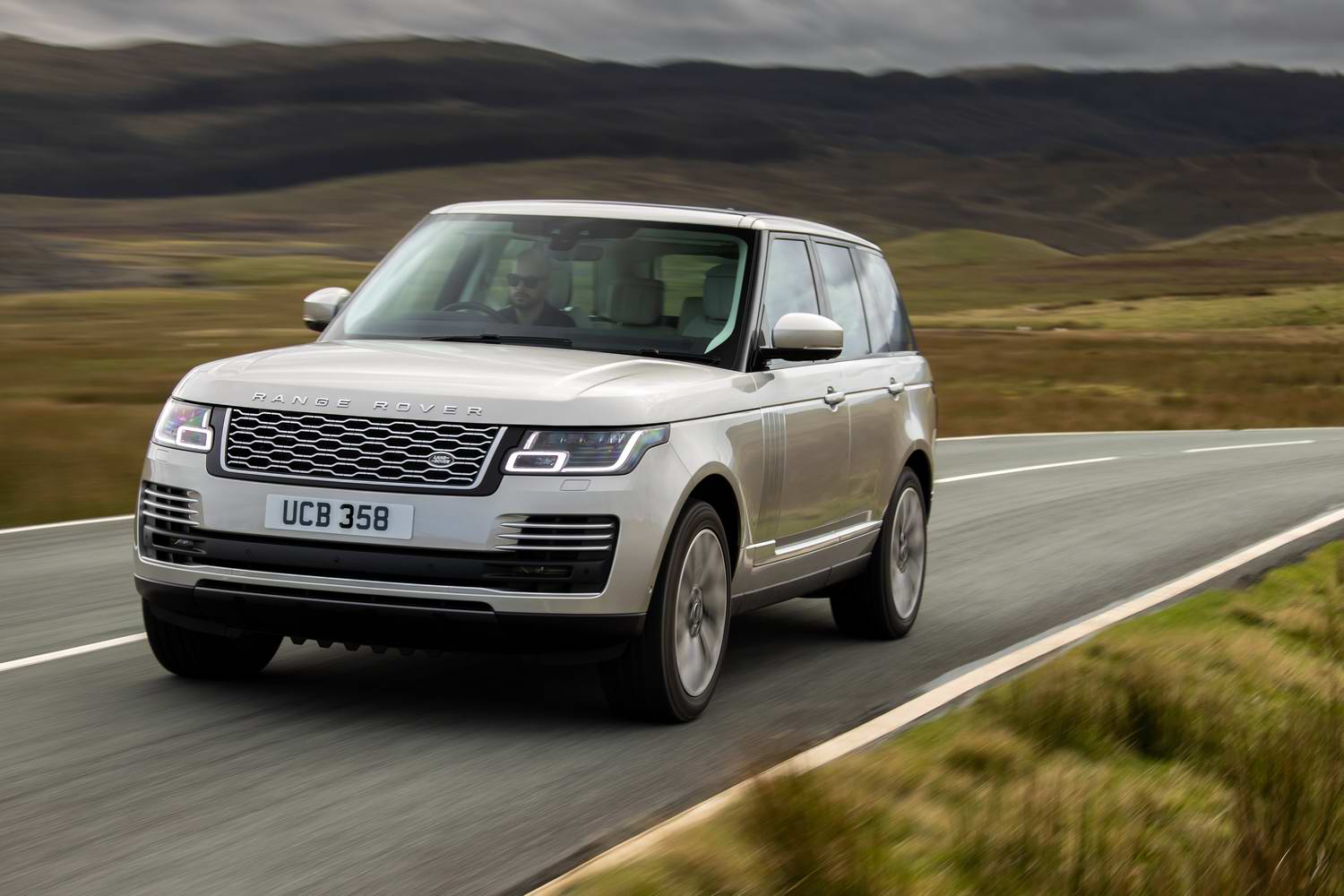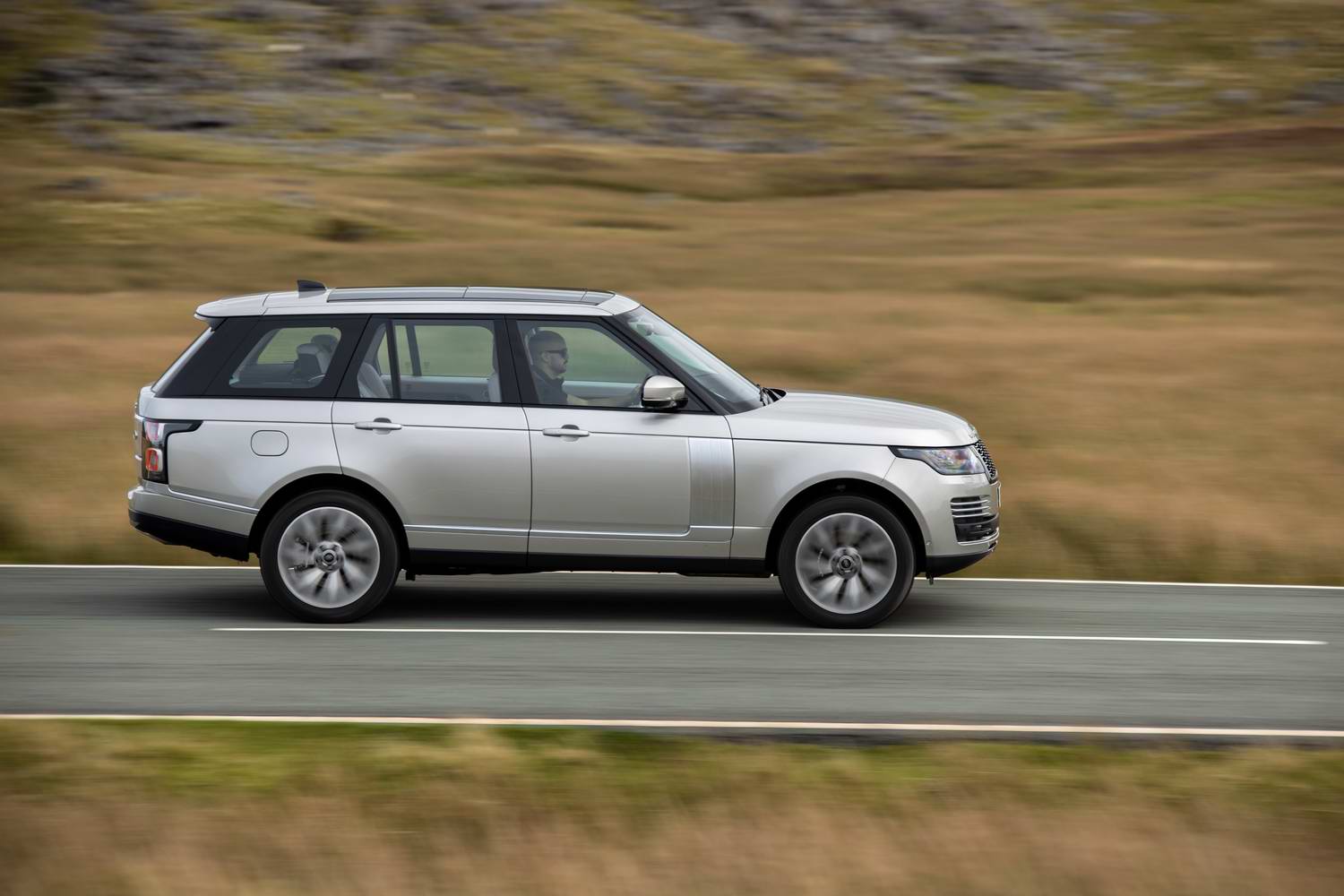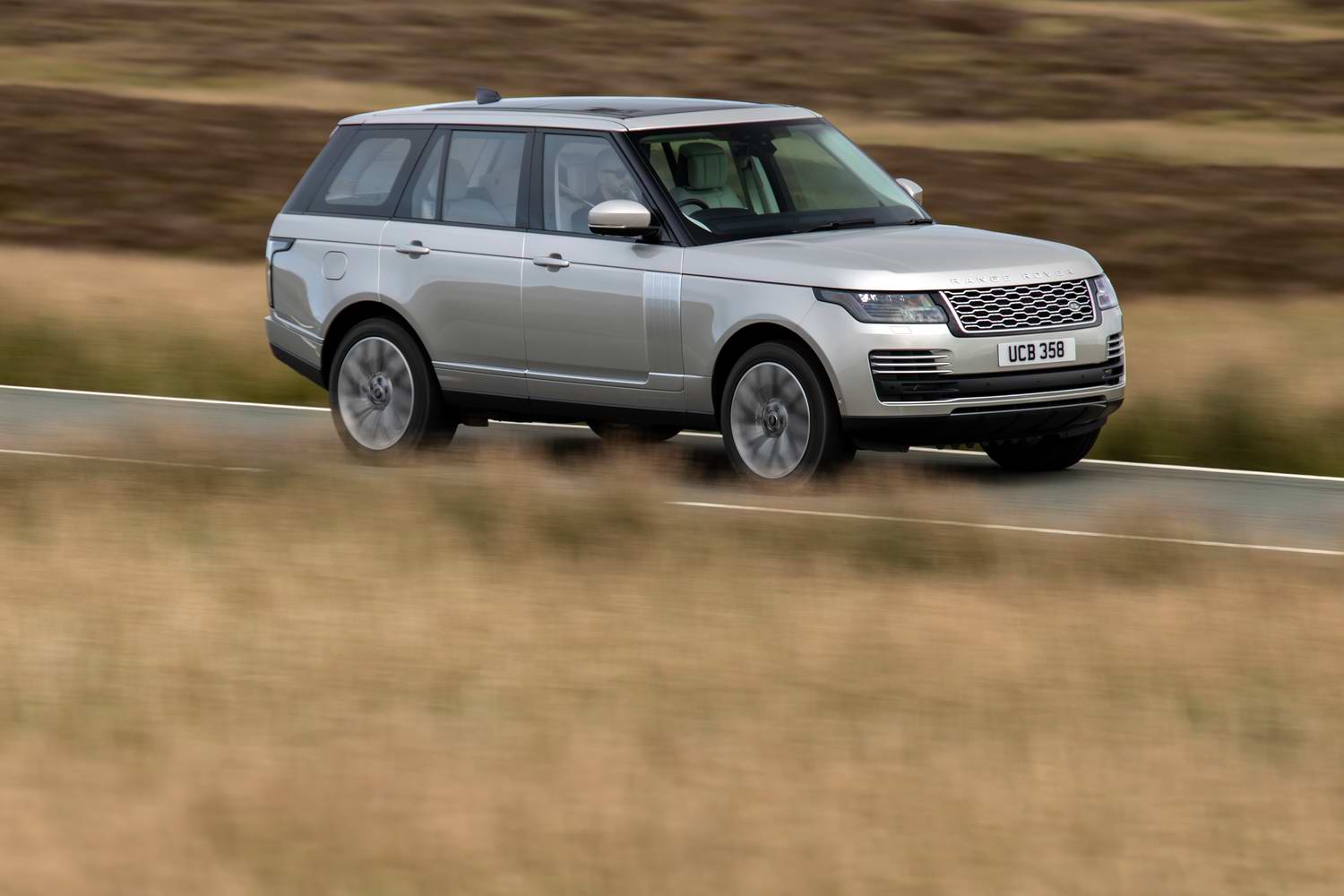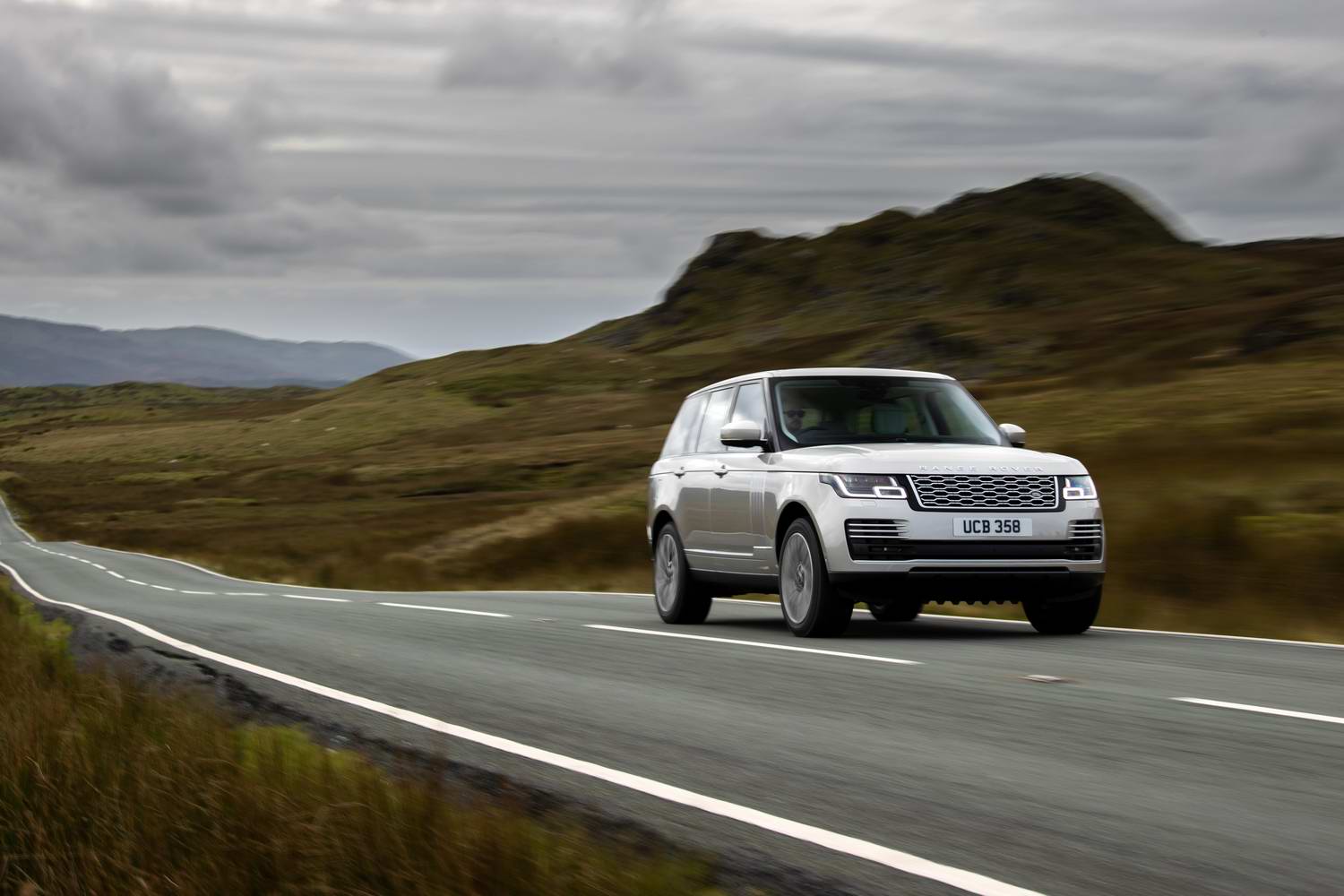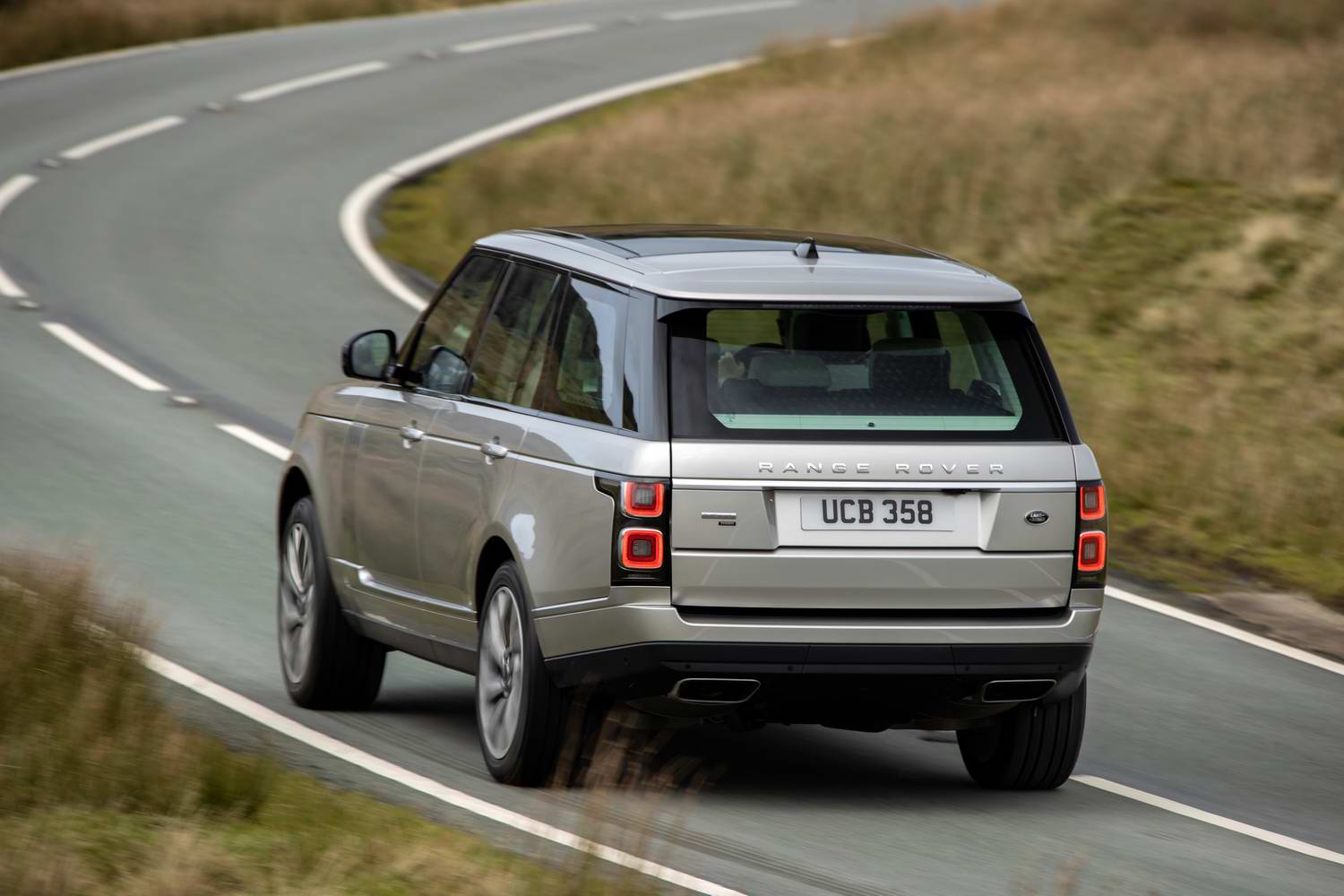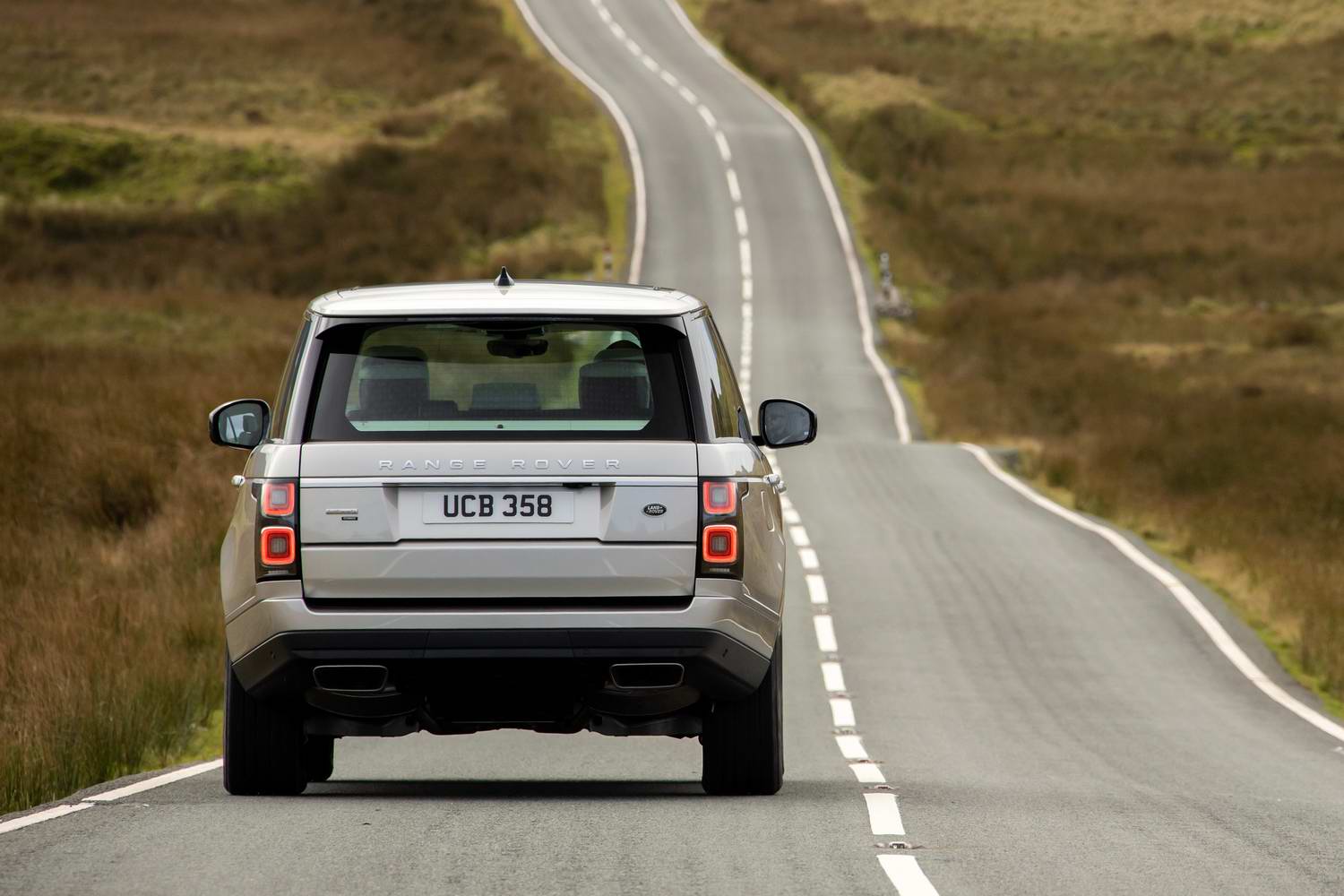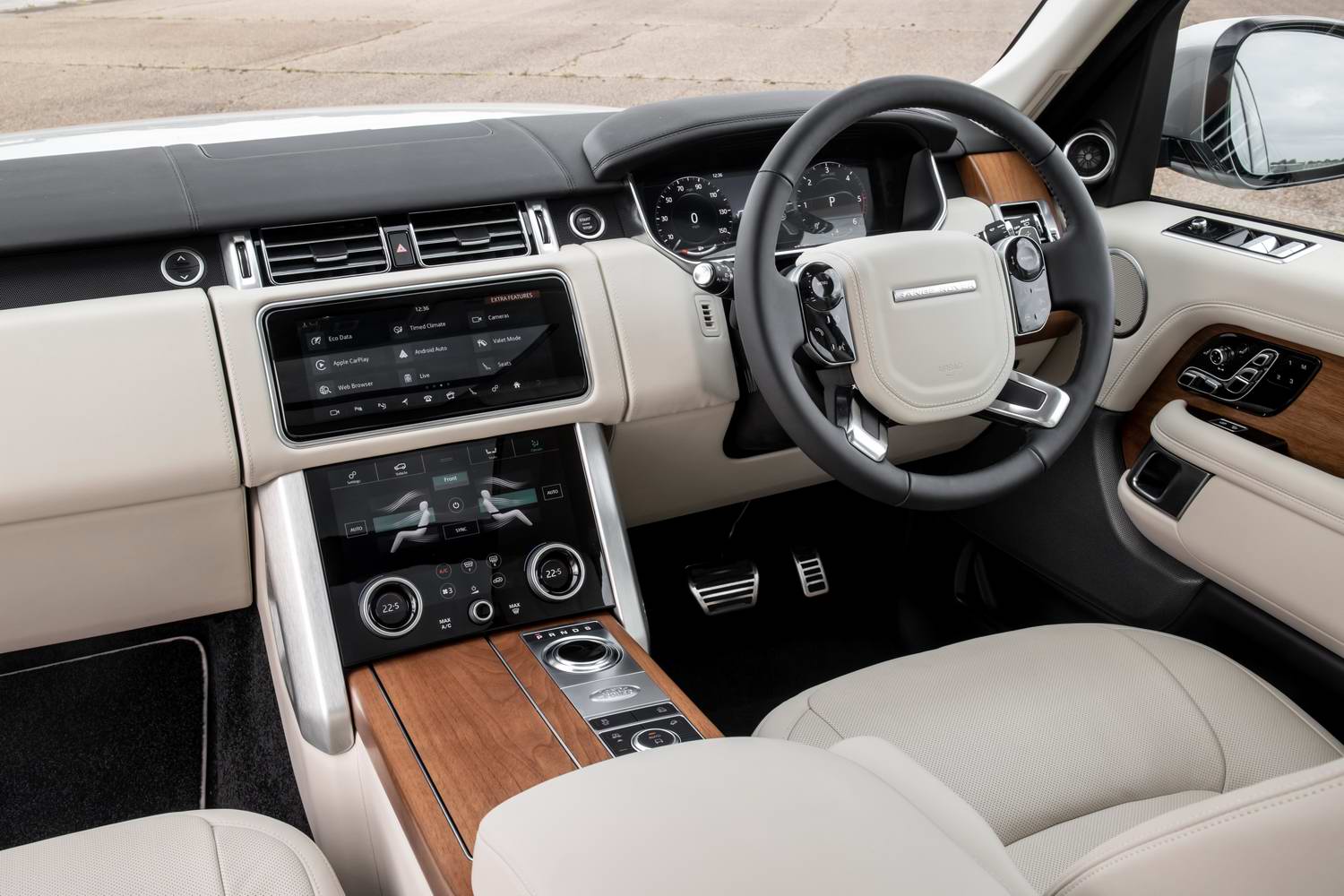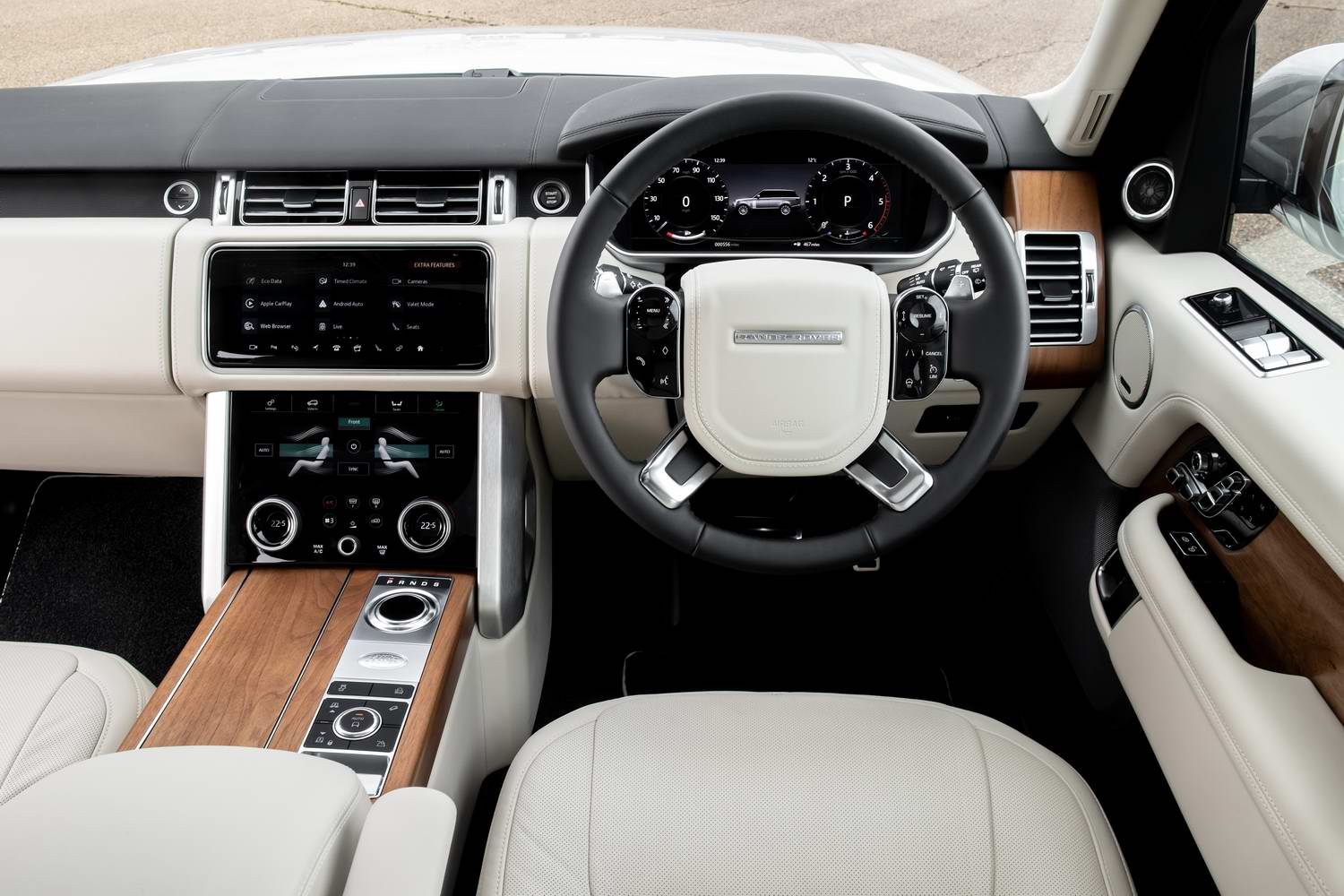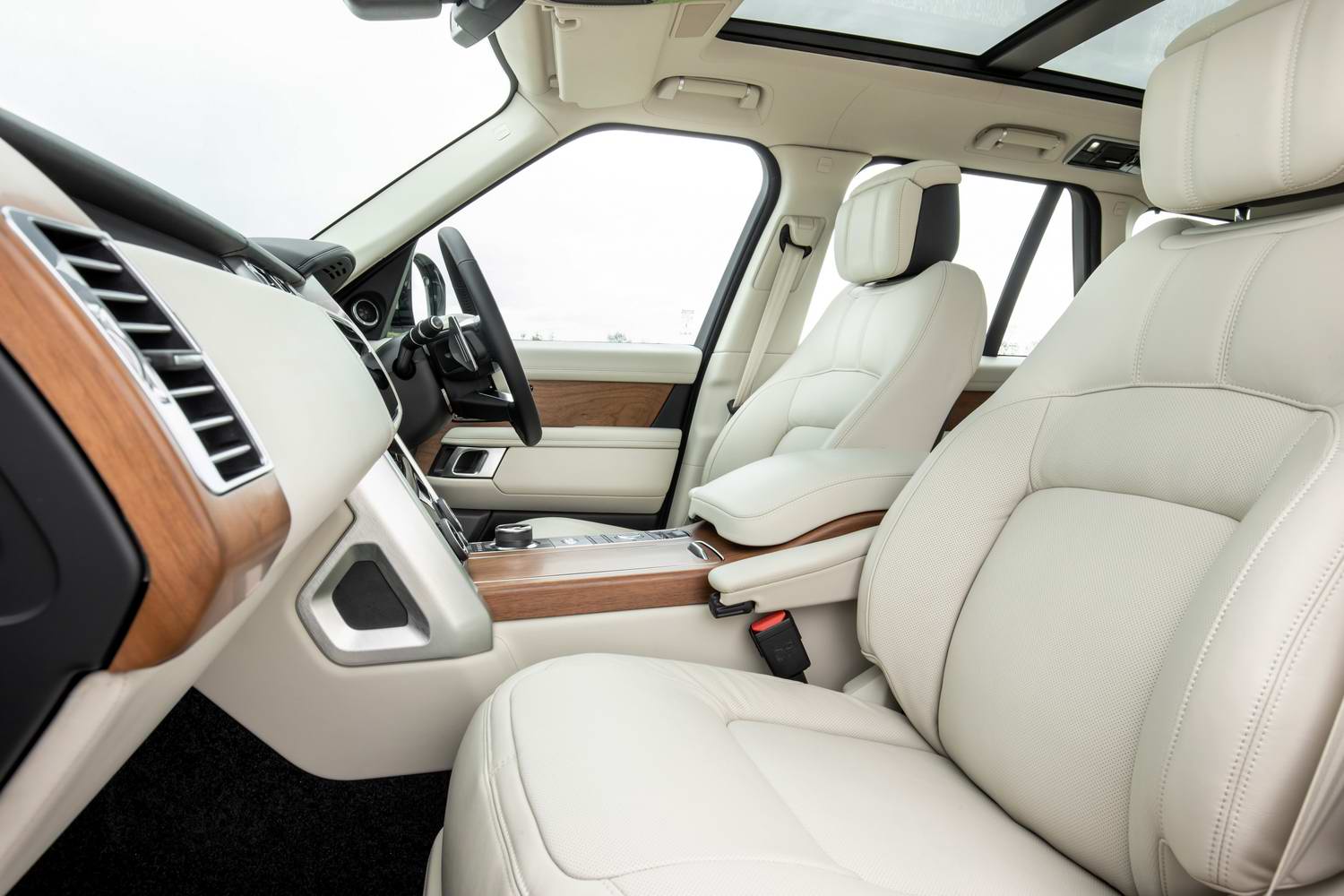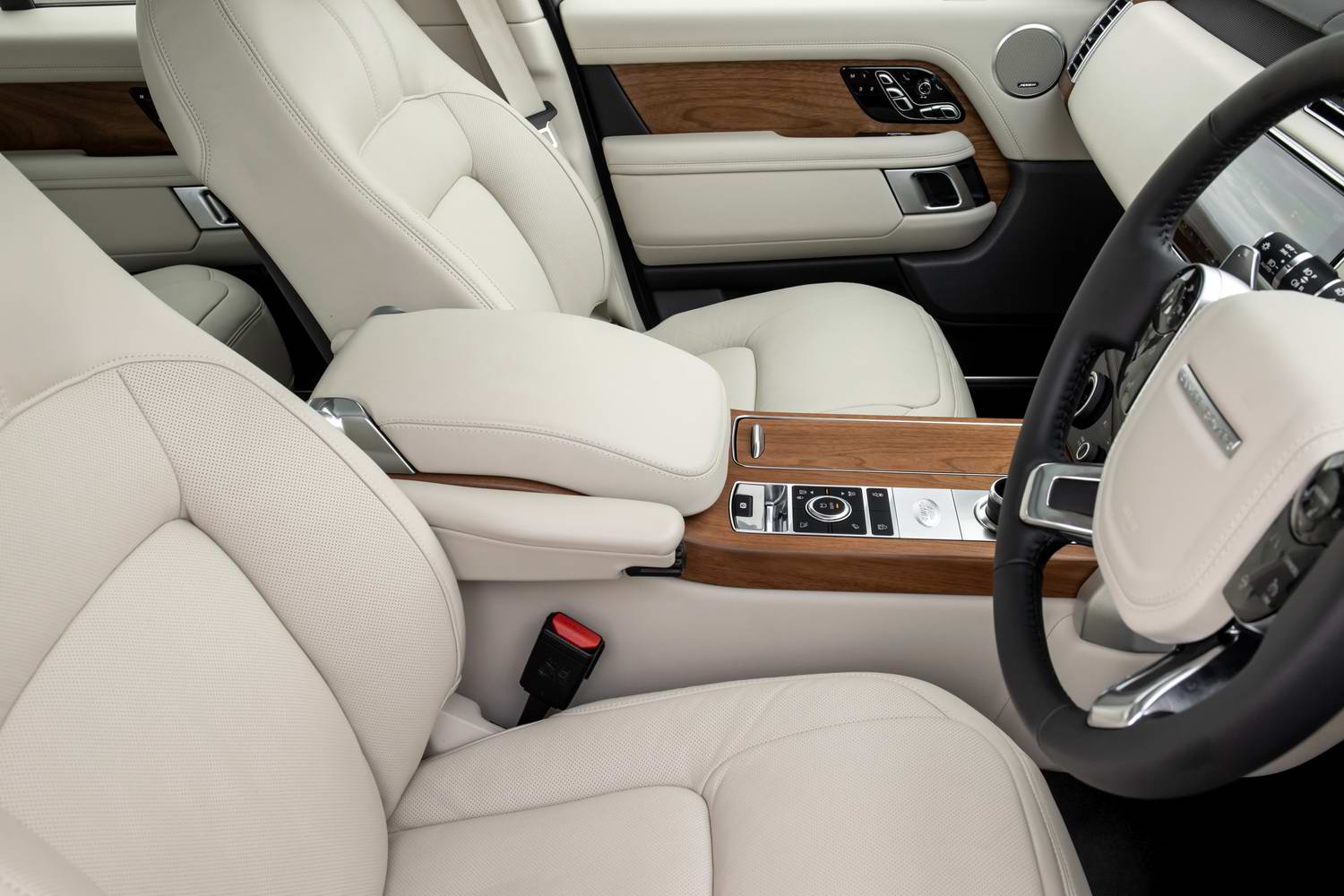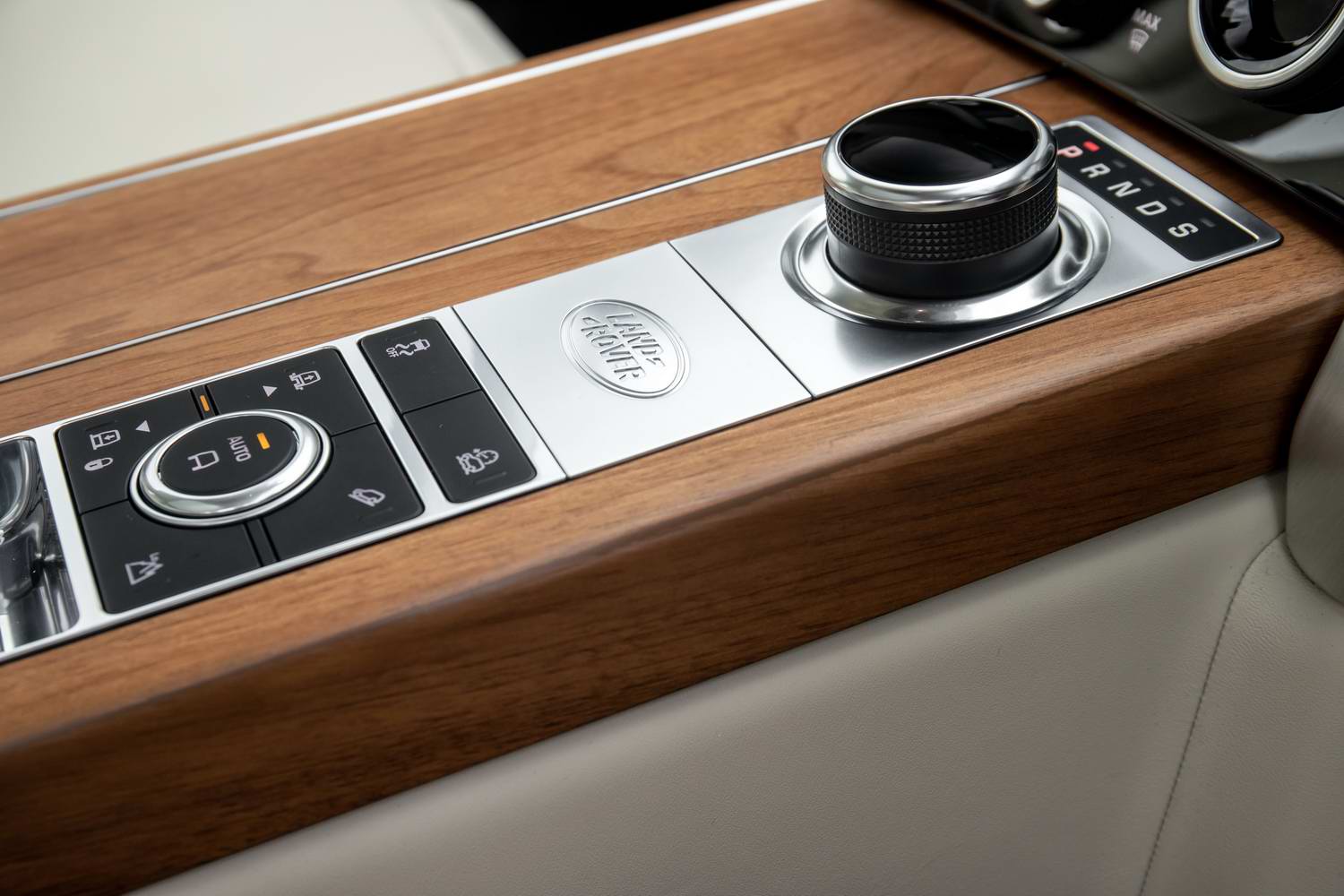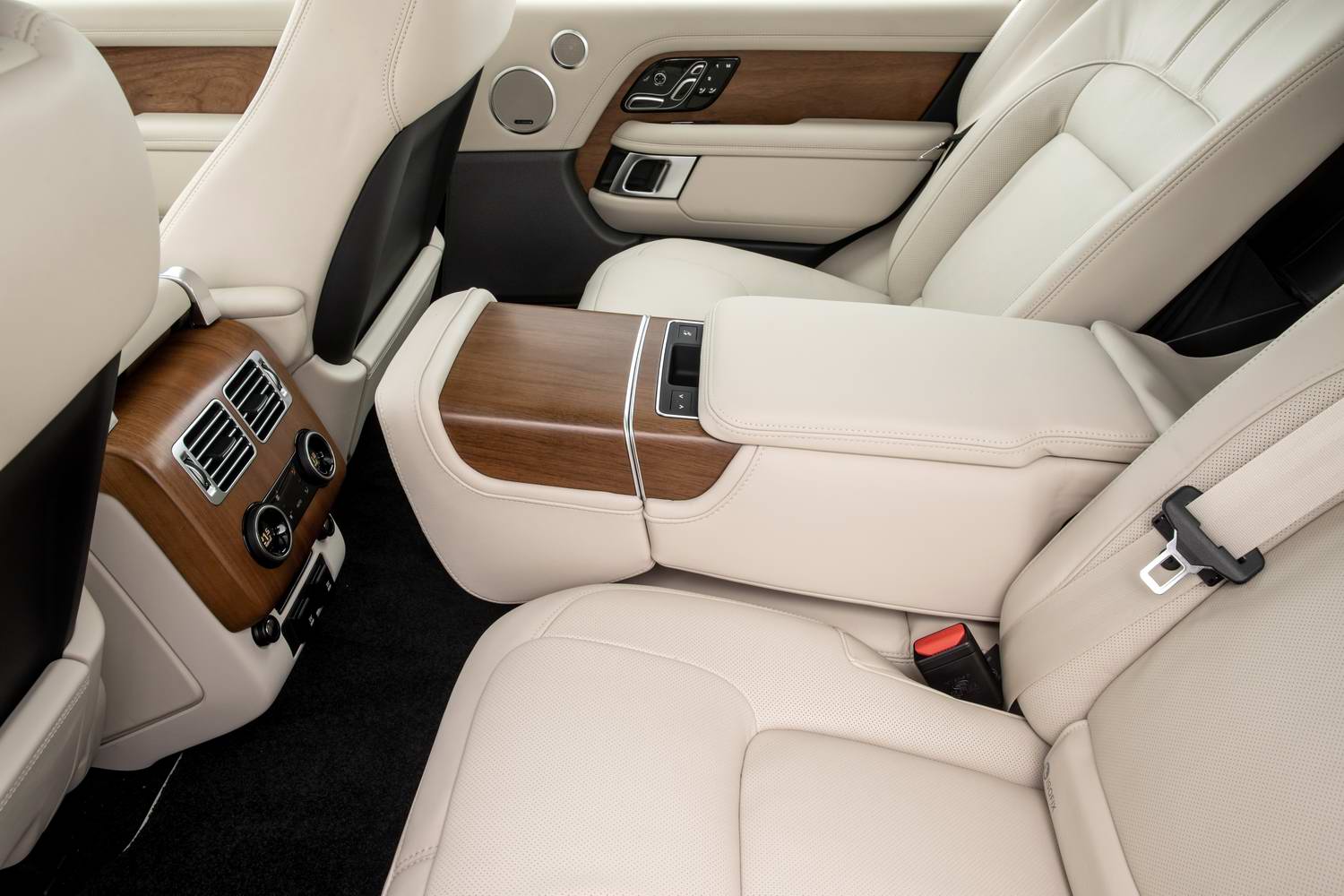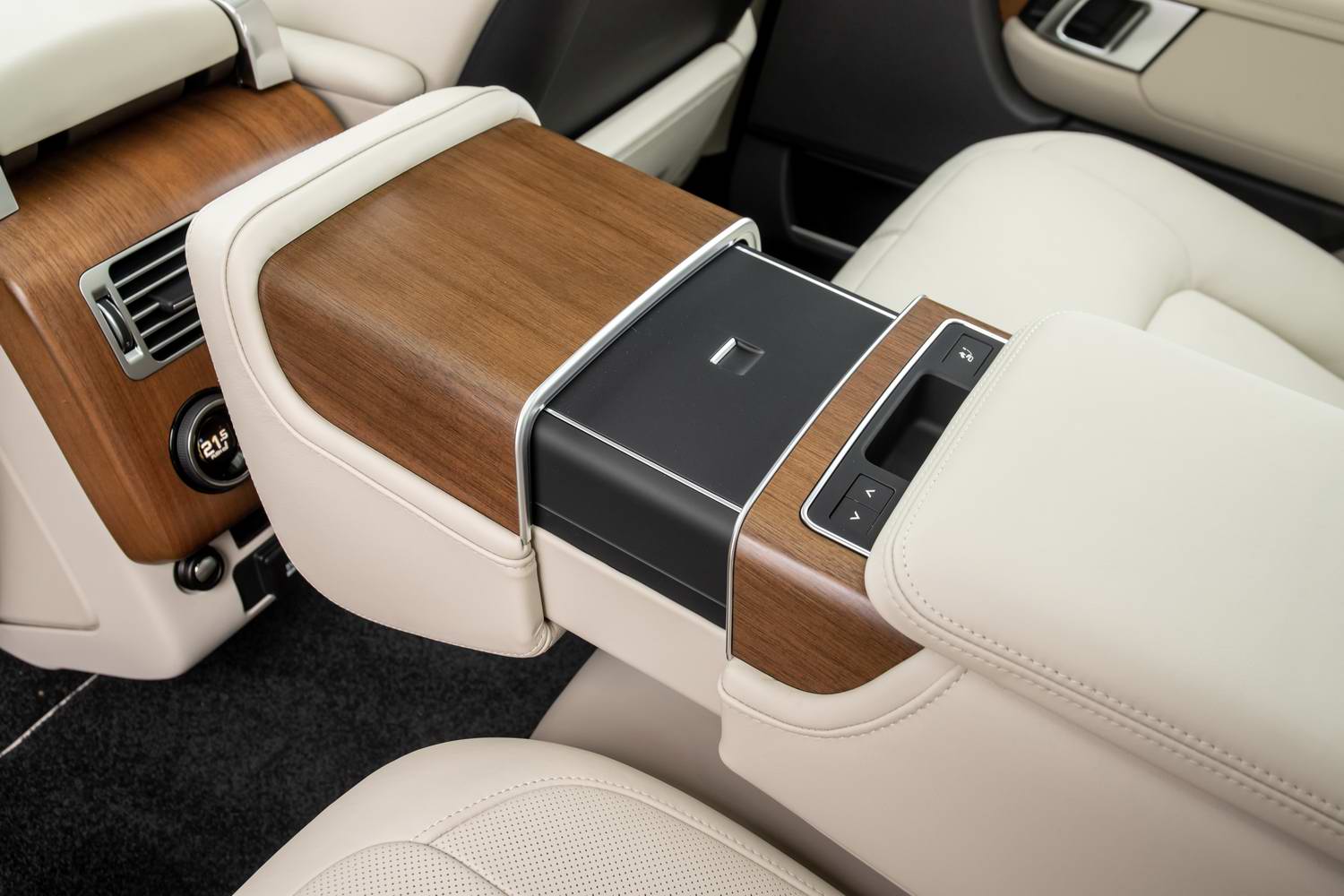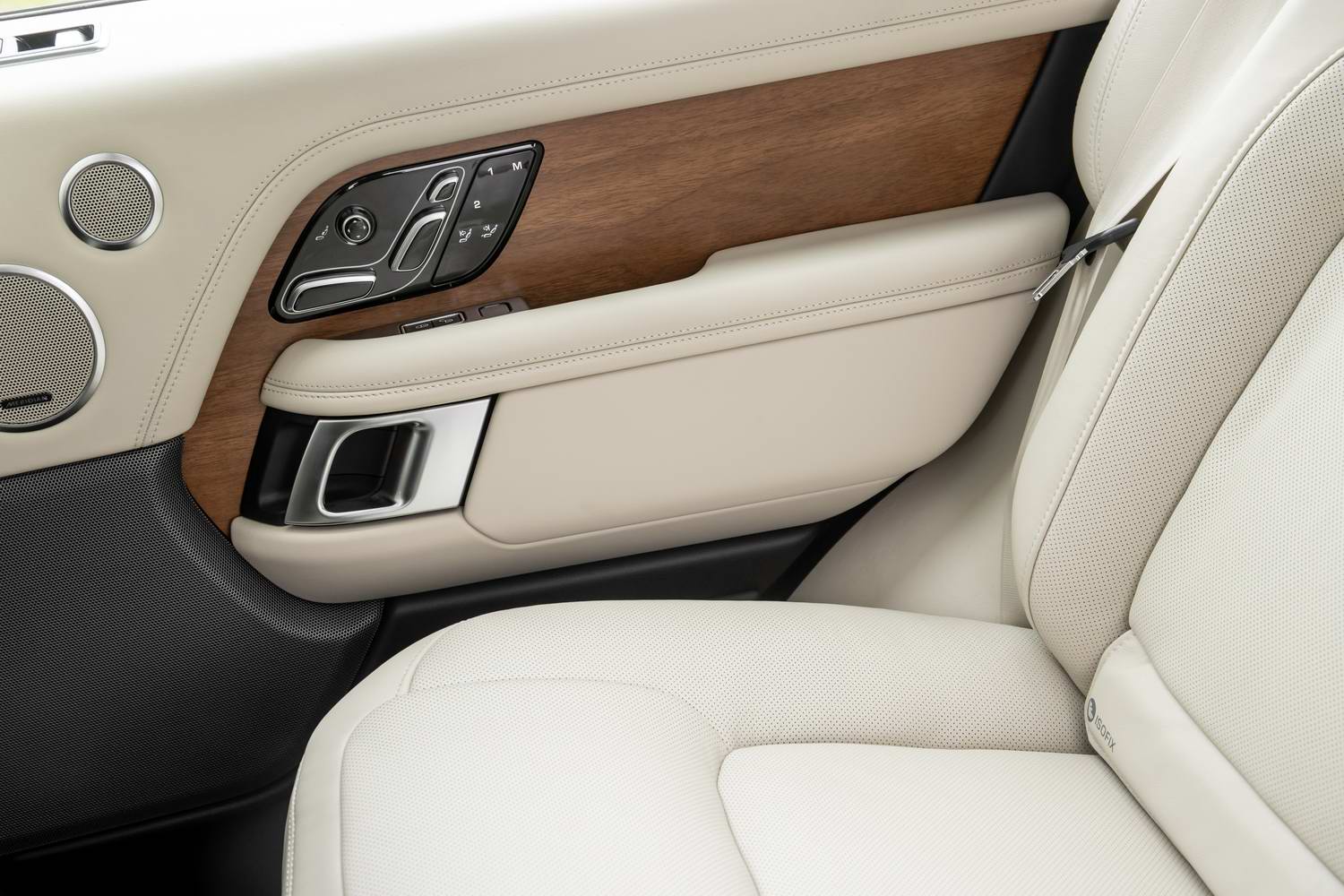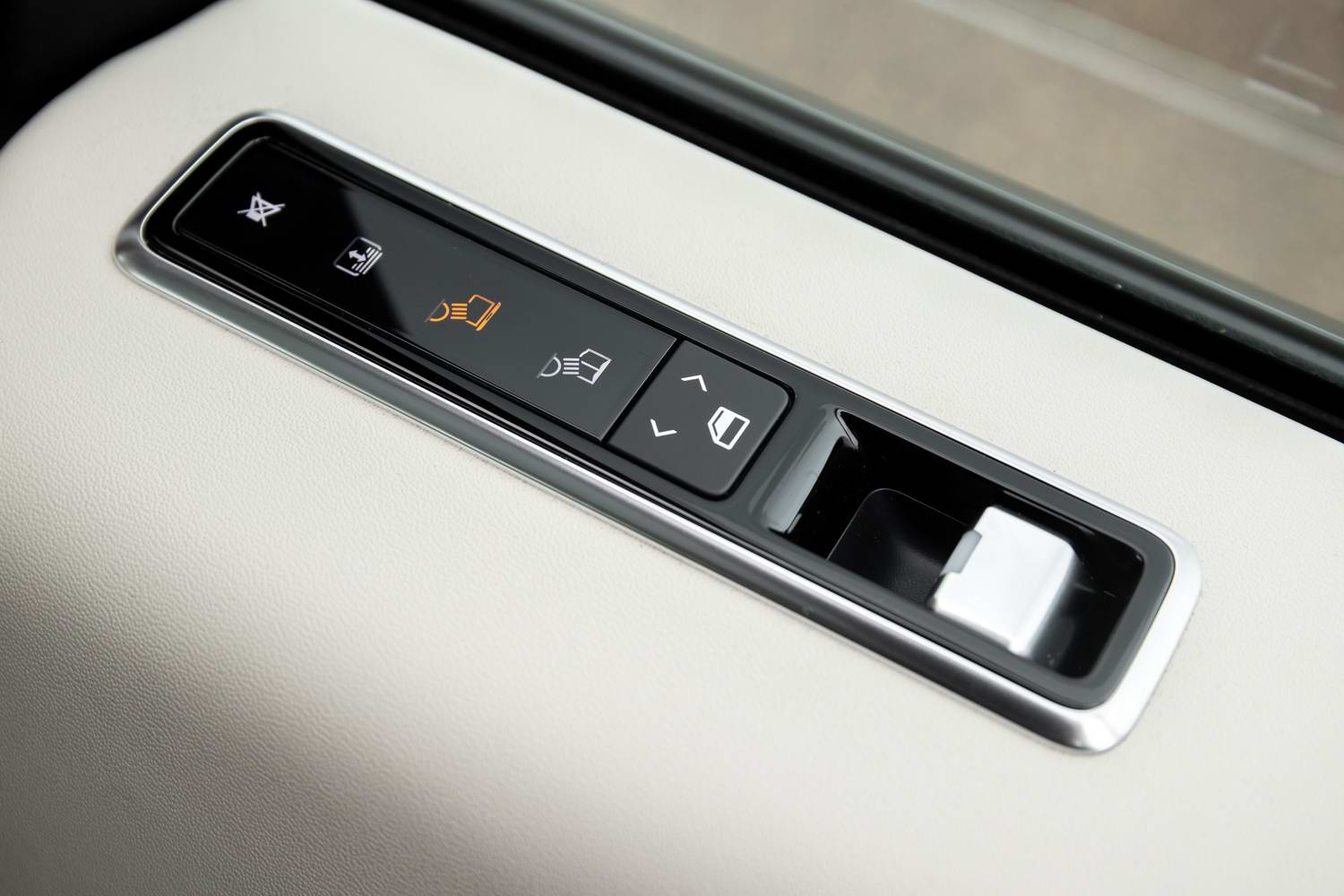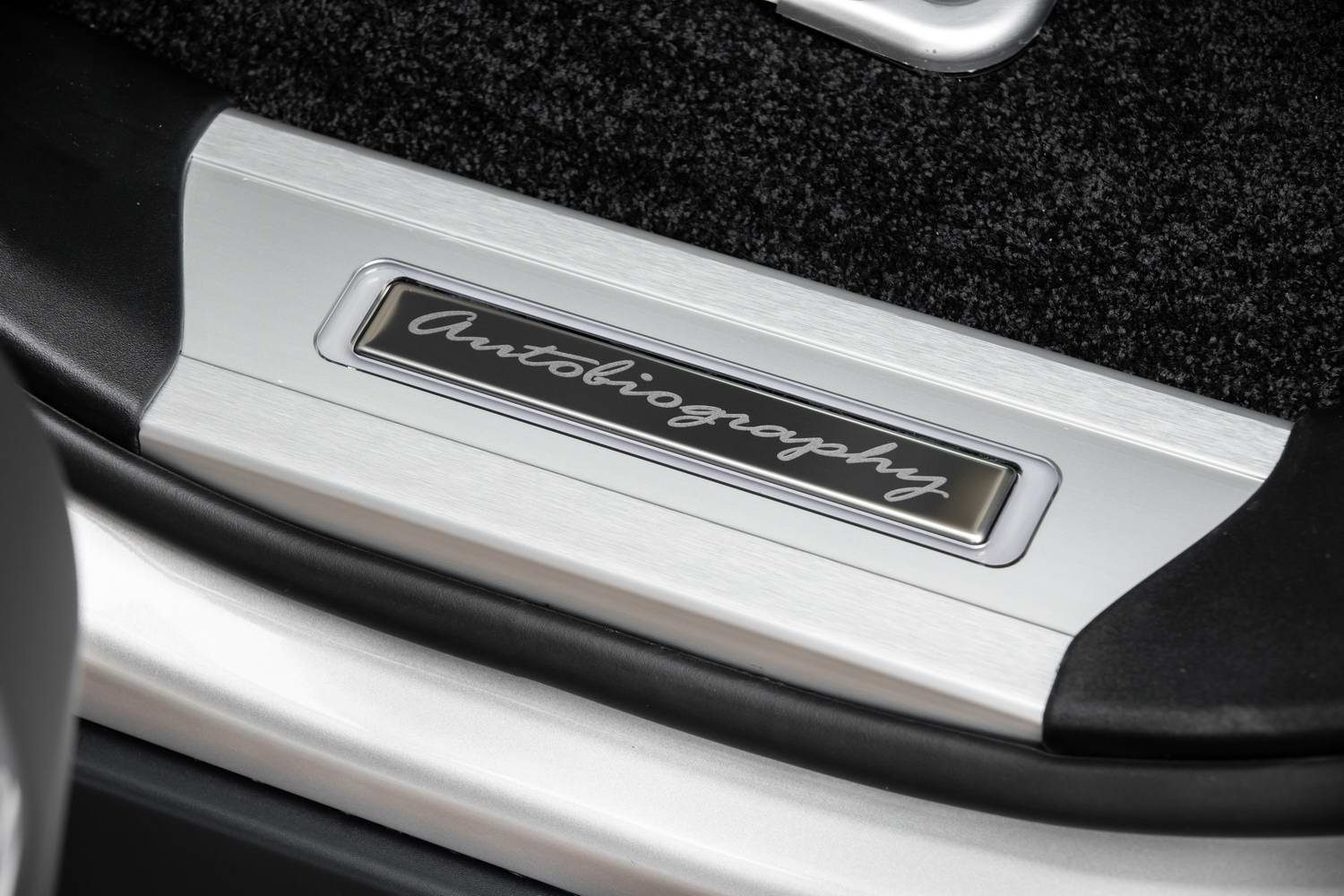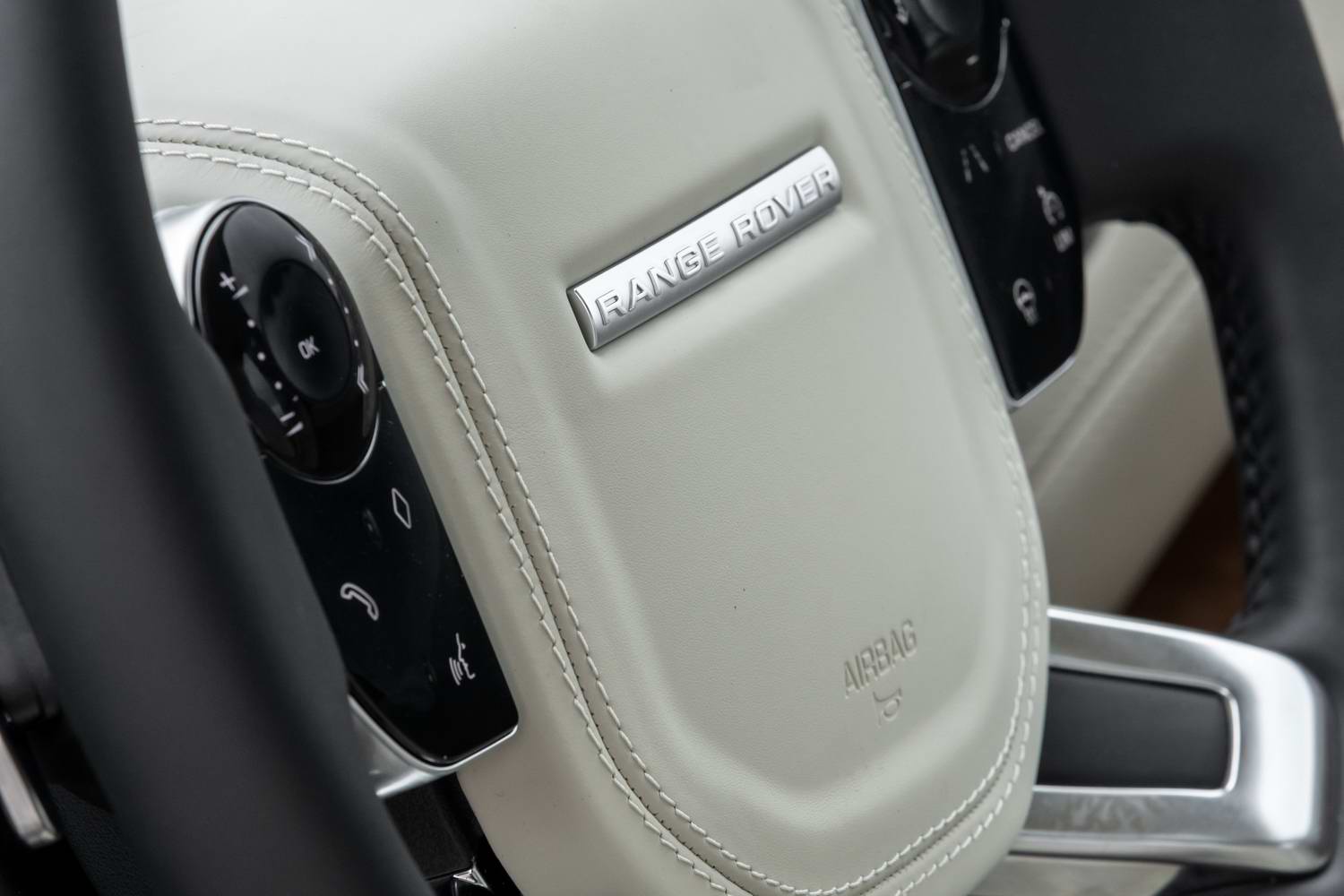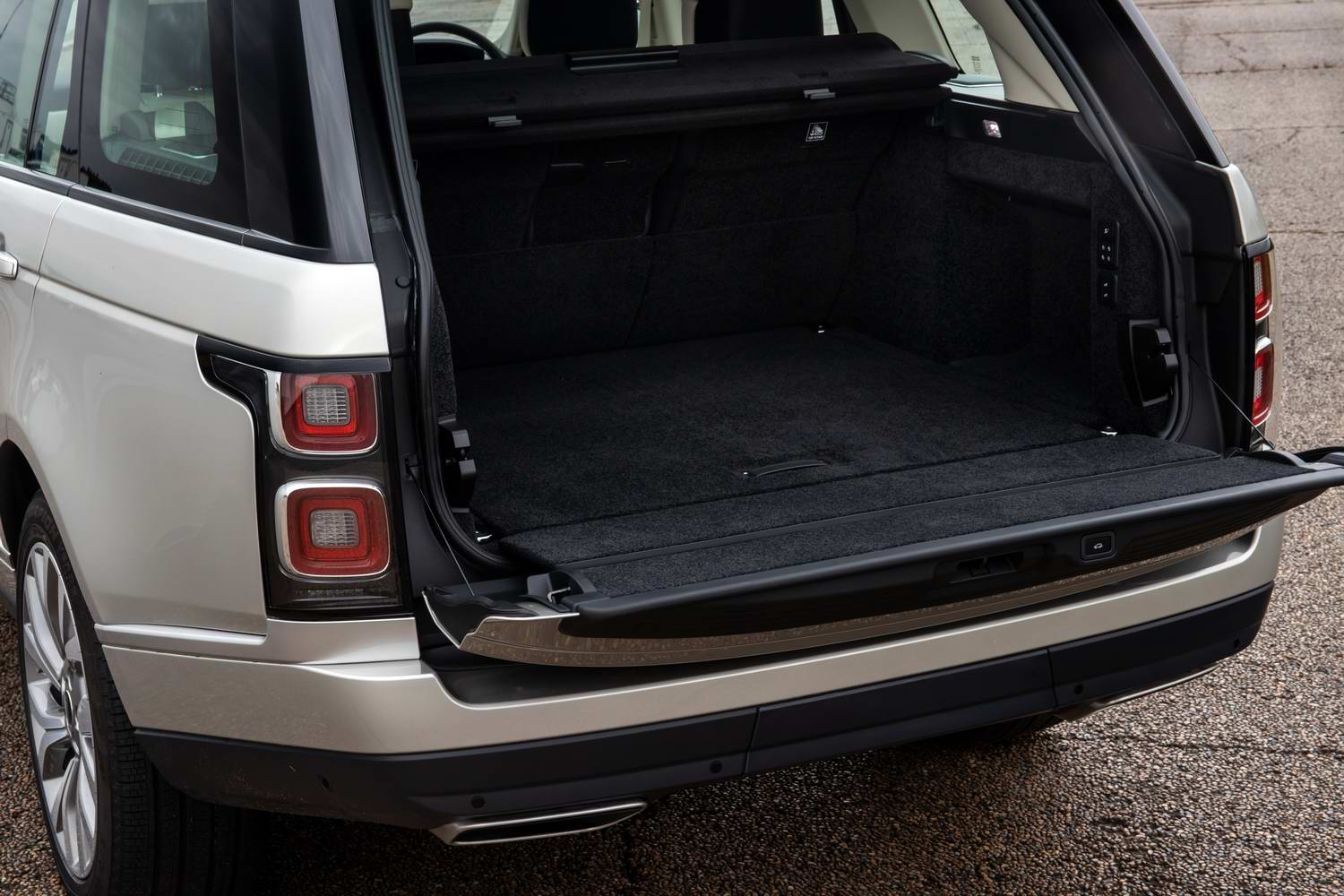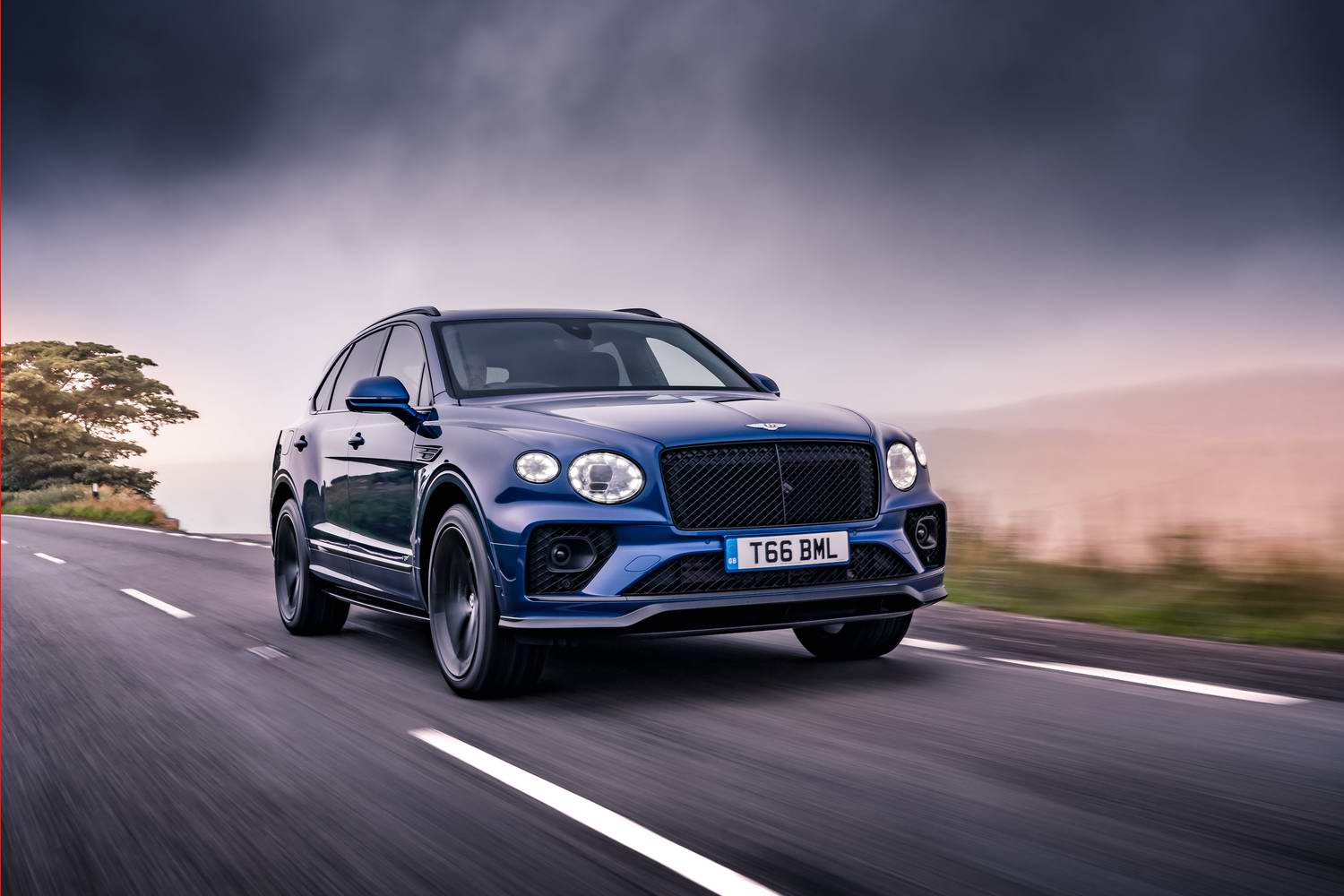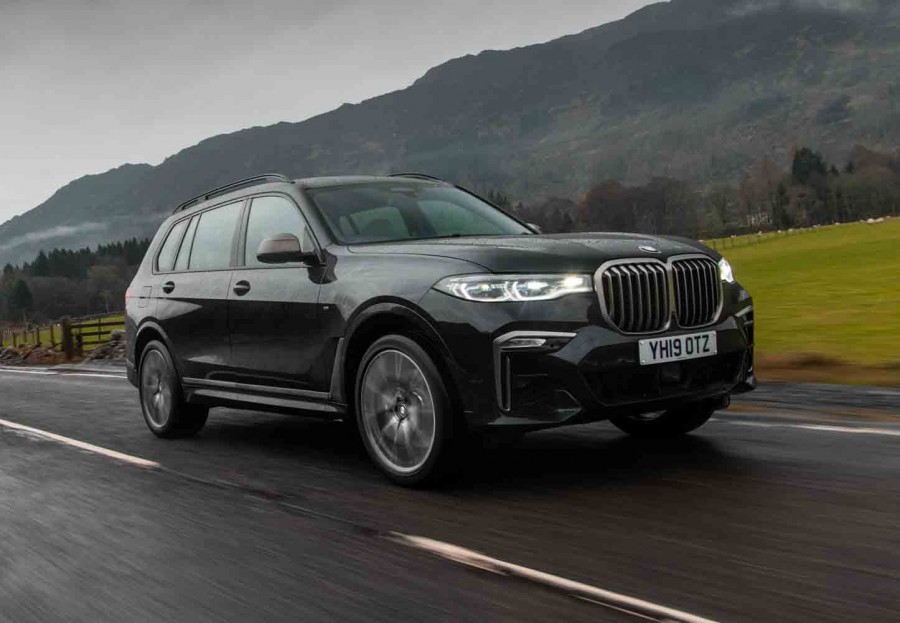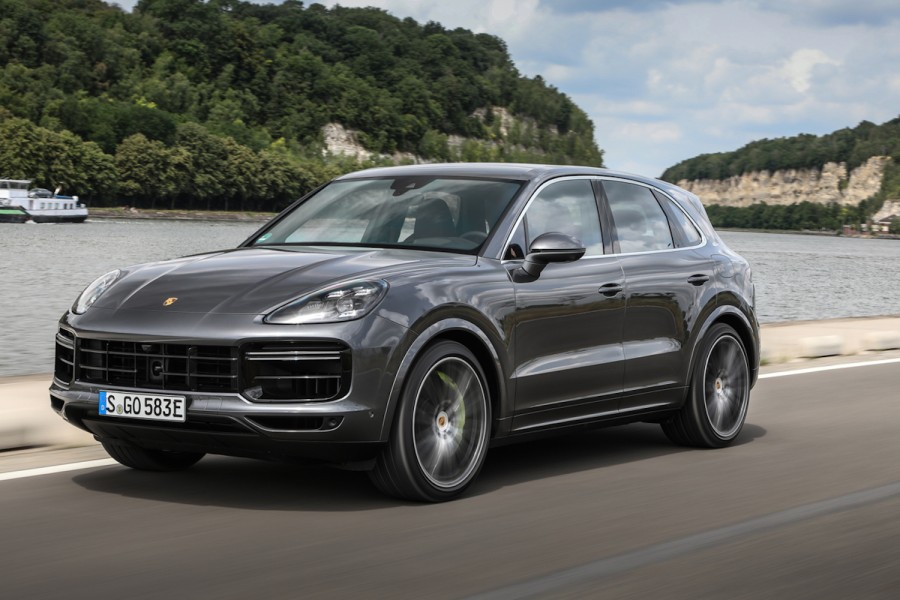This current Range Rover may be nearing the end of its production cycle, but the addition of a new in-line six-cylinder diesel engine and mild-hybrid technology adds fresh life to the thoroughly sumptuous SUV.
In the metal
Even in is standard wheelbase length, the Range Rover remains one of the more imposing looking luxury SUVs on the road. You can keep your Audi Q7, BMW X7 and even your Bentley Bentayga (admittedly better looking now post-mid-cycle update), because when it comes to making a first impression, none of them do it as well as the Range Rover. It has a monolithic elegance that the others can't match, and it outshines the smaller Range Rover Sport, too. It's a design that tells people you could be doing quite well for yourself or you could be a billionaire oligarch. It's saying something about the inherent rightness of the original design that it still looks so attractive today, especially as there's an all-new Range Rover just around the corner.
By the latest standards, the interior is a reasonably uncluttered affair, thanks partly to many of the control panels and surfaces sitting flush with the dashboard and centre console. The pop-up rotary shifter for the automatic transmission seems a bit old hat at this stage, though, and this Range Rover is one of the last models in the Jaguar Land Rover portfolio to retain it. Two touchscreen surfaces dominate the middle of the dashboard, with neatly integrated multi-function controllers. It all works well and looks smart, though it is starting to date a little bit and, if you poke your head into any other Land Rover product, you'll see the same carry-over parts, which doesn't make this flagship model seem as special as it ought to.
If you're lucky enough to be driven everywhere, retiring to the rear seats is recommended, as they are gloriously comfortable. Even in the regular wheelbase model there is ample amounts of legroom, and the electrically reclining seatbacks add another layer of comfort. Land Rover knows that people that choose to travel in such a car may have more than an overnight bag to transport, hence the 900-litre boot that is accessible via an electrically operated split-folding tailgate. A quick press of the air suspension button inside the boot can lower the rear to an amenable height allowing users to perch themselves on the opened tailgate, too, for changing out of your muddy boots or whatever.
Driving it
An in-line six-cylinder engine suits the Range Rover, and this latest D350 power unit also benefits from mild-hybrid technology. Although it doesn't mean that the Range Rover can waft around in purely electric mode, it does provide a modest electrical boost to the engine, in particular during acceleration. The engine's stop-start function is smoother too on account of the integrated starter generator. Like the TDV8 engine this D350 replaces, there is a constant high tide of torque that swells from seemingly tiny revs, delivering its 700Nm peak by around 1,500rpm.
The new engine represents a 13 per cent reduction in CO2 output in comparison to the older TDV8 it replaces. Even so, with emissions of 241g/km it takes the fast track to the highest band of motor tax. Unlike with some other mild-hybrid systems, the diesel engine doesn't deactivate when coasting; in fact, the automatic gearbox doesn't have a coast or free-wheel function, either. Instead, the mild-hybrid system recovers energy that is usually lost when slowing down, and can then redeploy it to provide an additional bump of torque when pulling away.
On the 21-inch wheels the ride remains pretty polished, with only higher frequency sharp bumps making their presence known in the cabin. Whether you're sitting in the front or the rear, the Range Rover is supremely comfortable, and the kilometres fade away. It is a car that you would happily undertake a day-long schlep across Europe in and arrive at your destination feeling as if you've only nipped down the road. The combination of its sumptuousness and the set of legs that the new diesel engine gives it makes the Range Rover almost peerless.
It's also more capable than you might expect, thanks in part to the off-road prowess that Land Rover provides. Most owners will probably not even so much as mount a kerb, but some light off-roading in it did little to phase the luxurious land yacht and, with its large alloy wheels wrapped in all season tyres and the Terrain Response 2 system dialled to a more rugged setting, it proves itself more than capable of patrolling whatever vast estate you may happen to possess.
What you get for your money
Pricing for the new range of engines in the Range Rover is still in the process of being confirmed for the Irish market, but once it is, this section of the review will be updated to reflect a rating of how it stacks up against its rivals.
Summary
Even though the Range Rover is getting on a bit in years now, it still delivers a luxuriously velvet-gloved punch that keeps it up there with the best of the best. The latest engine is a worthy successor to the V8 it replaces, too. For those unconcerned by price, the Range Rover is difficult to ignore.

